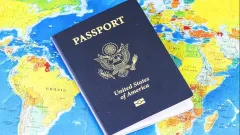Satellite-based toll system is going to be introduced in India soon, Union Minister Nitin Gadkari has announced.
Satellite-based toll collection system: 5 countries that use satellite-based toll system
Union Road Transport Minister Nitin Gadkari has taken a big decision by ending the existing toll system and has announced the implementation of a satellite-based toll collection system. He said on Friday (July 26) that the government is ending the toll and the satellite-based toll collection system is going to start soon. The purpose behind implementing this system is to increase toll collection and reduce congestion at toll plazas.
What is satellite based toll system?
For the satellite based toll system, the government will use GNSS based tolling system which will replace the existing electronic toll collection system. Let us tell you that the existing system works on RFID tag which automatically collects toll. On the other hand, the GNSS based tolling system will have virtual tolls. That is, the tolls will be present, but you will not see them. For this, virtual gantries will be installed. Which will be connected to GNSS enabled vehicles.
During this time, if the vehicle passes through these virtual tolls, money will be deducted from the user's account. India has its own navigation systems GAGAN and NavIC. With their help, it will be easy to track vehicles. Also, the user's data will also remain safe.
What will be the benefit?
In the current Fastag based toll system, if you use the highway, you have to pay the full toll even for a short distance. Whereas, in the satellite toll system, you will have to pay toll for the distance you want to cover. That means you can avoid paying additional toll tax. However, only after the satellite toll system is implemented, it will be known how much toll tax the government will charge for how much distance.
Where is the satellite based toll system applicable?
This system is yet to be implemented in India, but five countries are already using it. These countries include Germany, Hungary, Bulgaria, Belgium and Czech Republic.

































